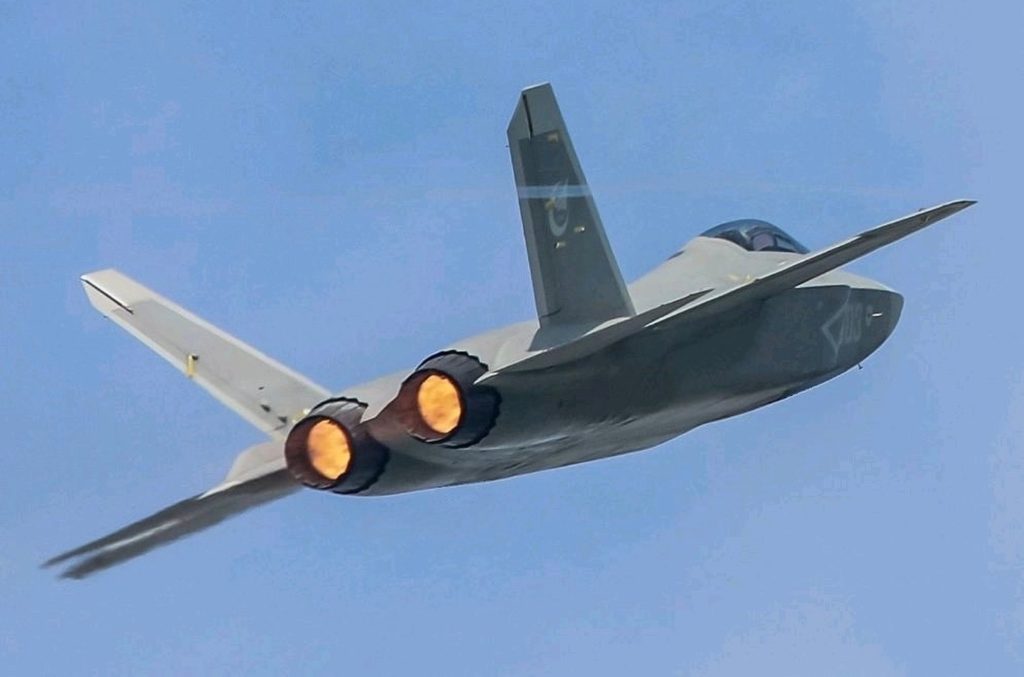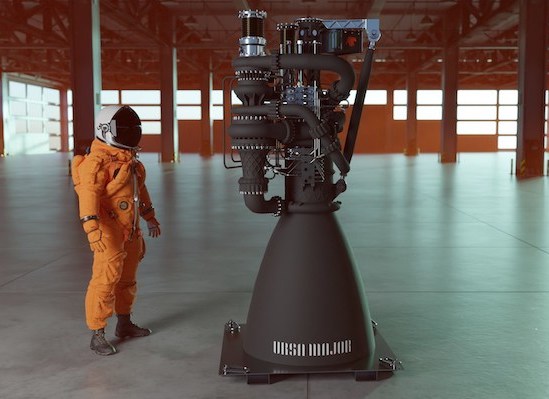The 3D Printing Industry Awards 2022 shortlists are now available for voting. Who will win the 2022 3DPI Awards? Have your say by casting your vote now.
China’s Shenyang Aircraft Company (SAC) is reported to be using 3D printing extensively in the production of its latest fighter jets.
Said to feature extraordinary maneuverability, stealth capabilities, and an internal weapons bay, one of SAC’s highest-profile jets, the Shenyang FC-31 stealth fighter, recently completed its first test flight. While the exact nature of the firm’s 3D printing activities hasn’t been revealed, the technology is understood to have enabled the development of lighter, more durable aircraft part assemblies.
“3D printed parts were widely used on a newly-developed aircraft that has made its maiden flight not long ago,” Doctor Li Xiaodan of Shenyang Aircraft Company’s craft research institute, told China Central Television (CCTV) last month. “We are applying 3D printing technologies on aircraft on a large scale at an engineering level, and we are in a world-leading position.”
China’s Shenyang Aircraft Company
Though there’s little information out there for western observers about SAC, it is known to be a subsidiary of the Aviation Industry Corporation of China. Based in Beijing, the Chinese state-owned conglomerate has a massive footprint in the country’s aerospace and defense sectors. As of 2021, the firm was ranked 140th in the Fortune Global 500 and it now has over 100 subsidiaries and 500,000 staff.
Not strictly a military aircraft manufacturer, SAC also produces parts like jet engines with civilian applications, as well as parts for UAVs and drones. That said, the company has had a big hand in the development of China’s second fifth-generation fighter jet, the FC-31, and it continues to seek out new ways of advancing the country’s defense interests.

Fighter jet 3D printing at SAC
As alluded to by the Global Times where Xiaodan’s comments were initially reported, the J-5, J-15, J-16 and FC-31 fighters all come under the SAC’s remit, and are therefore likely to be benefiting from its 3D printing adoption. Also known as the J-31, the latter is a 17.3 meter long, 11.5-meter wingspan multipurpose fighter jet with twin engines, designed to take on anything a future battlefield might throw at it.
According to reports, the FC-31 also features enhanced avionics and sensors, providing pilots with improved situational awareness and ‘electronic-warfare’ systems. These are complimented by the aircraft’s design, with its airframe incorporating low-aspect ratio trapezoidal planform wings, each of which has a sweep of 35°, in a way that reduces its radar cross-section and makes it stealthier.
While the aircraft has been under development for some time, with a demonstrator version of the J-31 first flown in 2012, its final design is starting to come together as it nears its active service date of 2024. A carrier-based FC-31 was flight-tested as recently as November 2021, and now SAC has provided some insight into the technologies likely to be behind its production, and that of its other jets.
In particular, 3D printing is said to have helped the SAC meet the growing demands of new-type warplane development in terms of weight reduction, lifespan extension, cost control and rapid response. Speaking to the Global Times, Song Zhongping, a Chinese military expert, added that the technology allows for the creation of rivets and welding-free integrated parts with ‘higher structural strength.’
More broadly, CCTV has reported that the technology is also being deployed across the Chinese aviation industry, not just at SAC but at other aircraft manufacturers. When it comes to the FC-31, meanwhile, the fighter will likely be developed into China’s next carrier-based fighter jet, and become available as an export under the ‘F-60’ designation.

Due to the competitive nature of the global defense sector, contractors aren’t always keen to share their latest fighter-related advances, but there’s growing evidence to suggest many are turning to 3D printing. Earlier this year, for example, it emerged that Rostec subsidiaries are likely to be building 3D printing upgraded MiG-31s to aid Russia’s invasion of Ukraine.
On the flipside, Ursa Major’s 3D printed rocket engine has been introduced as an alternative to the now-unavailable Russian RD-180 and RD-181 propulsion systems used by many US launch firms. The firm’s ‘Arroway’ methane-staged combustion engine is being built using 3D printing, in a way that’s said to yield lead time and part consolidation benefits.
HENSOLDT has also unveiled a 3D printed Kalaetron Attack jammer that’s designed specifically to protect Western fighter jets against Russian air defense systems. Featuring electronics condensed via 3D printing, the device is set to be deployed by the German Armed Forces within air defense and intelligence-gathering applications.
To stay up to date with the latest 3D printing news, don’t forget to subscribe to the 3D Printing Industry newsletter or follow us on Twitter or liking our page on Facebook.
While you’re here, why not subscribe to our Youtube channel? featuring discussion, debriefs, video shorts and webinar replays.
Are you looking for a job in the additive manufacturing industry? Visit 3D Printing Jobs for a selection of roles in the industry.
Featured image shows SAC’s Shenyang FC-31 stealth fighter jet. Photo via the South China Morning Post.



